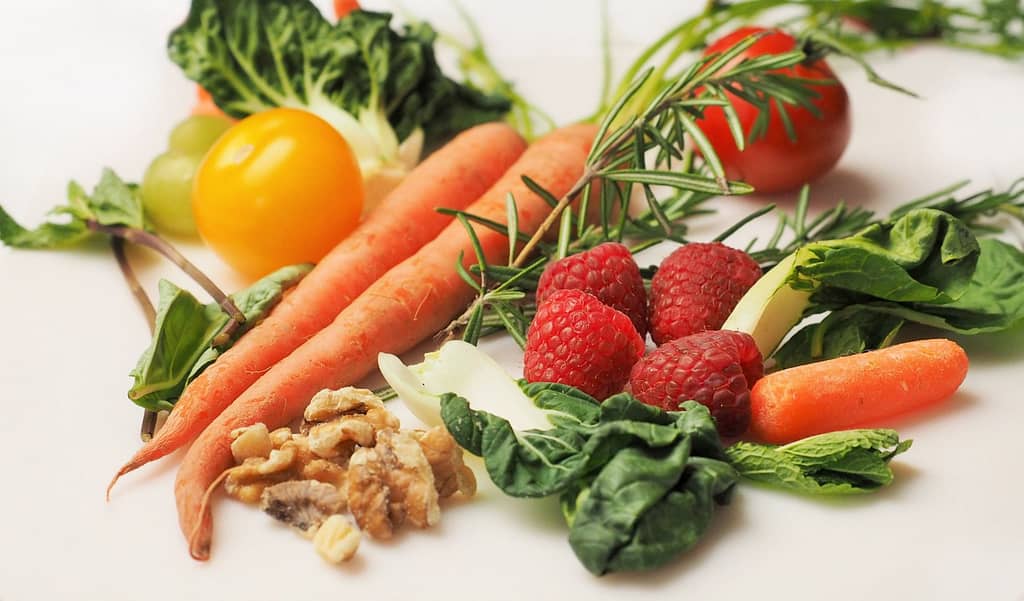Nutrient-Dense Foods: What Patients and Members Need to Know
“Nutrient-dense” (or nutrient-rich) is a term that has been gaining popularity, especially in online health and wellness spaces. In this article, we cover frequently asked questions about nutrient-dense foods so case managers and healthcare providers ensure that post-discharge patients or health plan members understand how our prepared frozen meals delivered to their homes meet their nutritional needs.
What does “nutrient-dense” mean?
Nutrient density refers to the level of helpful nutrients in a food relative to its calorie content and the number of harmful components. Nutrient-rich foods provide essential vitamins, minerals, fiber, protein, and good fats while containing limited, if any, amounts of added sugars, saturated fat, and sodium.[1]
Nutrient-dense foods are the healthful alternative to “empty calorie” foods, which offer little nutritional value compared to the number of calories they have.
What kinds of foods are nutrient-dense?
There are nutrient-rich foods in every food category, making it easy for patients and plan members to fill their plates and satisfy their palates with good health in mind:
- Fruits and vegetables: Look for greens, oranges, reds, and blues. Think lush, leafy spinach and juicy, bold berries. If individuals must buy frozen or canned fruits and vegetables, remind them to check the label and avoid any that contain added salt, sugars, or syrups.
- Grains: The key phrase to remember when choosing bread, cereal, pasta, and more is “whole grain.” This indicator of high fiber (at least 3 grams per serving) includes whole grain wheat flour and whole grain oats. Take care when choosing some whole grain-based products such as breakfast cereals, which may contain added sugar.
- Meat, poultry, and fish: Lean is the theme when sorting through cuts of meats and poultry. Look for low-fat cuts such as round, loin, and leg for beef, lamb, and pork (although people on heart-healthy diets may want to limit these kinds of meats because they are high in cholesterol).Skinless chicken breast is a versatile protein that can be incorporated into most diets. As for fish, focus on freshness (including smell). Frozen or canned fish with high-Omega 3s, such as salmon, tuna, mackerel, and sardines, are good choices. Avoid packaged fish that might be salted or packed in oils or sauces.
- Meat substitutes: A growing number of Americans are now learning what vegetarians already know. Nutrient- and protein-rich alternatives such as beans, chickpeas, lentils, seeds, and nuts are healthful protein alternatives and often leave less of a carbon footprint. Remember to soak or drain any canned legumes to remove added salt or starches. Individuals or caregivers should also be mindful of portions if incorporating nuts and nut butters into a diet. While these foods are nutrient-dense, they are also calorie-dense.
- Dairy: Milk, yogurts, and cheeses usually say “low-fat” or “fat-free” right on the label, making it easy to choose wisely.
Where are nutrient-dense foods found at the store?
According to the Mayo Clinic, the best way to find the freshest and most nutritious foods at the supermarket is to “shop the perimeter.” The idea behind this method is that the store’s outer aisles contain fresh produce, meat cases, and dairy while the inner aisles stock the more processed and, most likely, the unhealthiest choices.[2]
If someone has a health condition that limits their ability to shop for healthful foods, a medically tailored, home delivery meal benefit fills the nutrition gap.
LiveWell with Traditions – delivering nutrient-dense meals to members’ doors
When that prepared meal delivery comes from LiveWell with Traditions, meal benefit recipients get the balanced, complete nutrition they need, delivered directly to their door.
LiveWell with Traditions’ meals are chef-inspired and dietitian-designed to provide nutrient-dense foods in healthful and appetizing preparations. For post-acute discharge patients and health plan members living with a chronic health condition, medically tailored meal kits from LiveWell with Traditions take the guesswork and legwork out of nutritious meal planning and food choices.
Our nutrient-dense frozen meals are available for those on a renal diet or cardiac diet, and individuals requiring diabetic, low sodium, gluten-free, or vegetarian meals.
LiveWell with Traditions’ nutrient-dense menus
By choosing LiveWell with Traditions, case managers and plan administrators can rest assured that patients receive nutrition that’s based on outcome-driven science. See our entire selection of menus featuring nutrient-dense heat-and-eat meals, and learn how we meet the special dietary needs of patients and plan members through our hand-delivered nutritious and flavorful medically tailored meals.
[1] https://www.dietaryguidelines.gov/sites/default/files/2021-03/Dietary_Guidelines_for_Americans-2020-2025.pdf
[2] https://www.mayoclinichealthsystem.org/hometown-health/speaking-of-health/grocery-store-tour-shopping-the-perimeter



